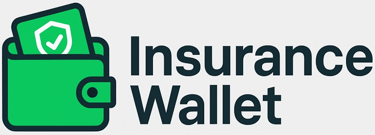How Insurers Price Their Products – Rating and Underwriting Basics
🌟 Introduction
Ever had a client ask,
“Why is my premium this much?”
Behind that number lies a careful process called rating and underwriting.
In simple words: insurers study the risk, decide the premium, and set conditions before issuing a policy.
Let’s break this into easy concepts that every advisor can explain confidently
🧾 What is Rating?
Rating means calculating how much premium should be charged for a specific risk.
It’s like preparing a bill in advance for a future unknown loss.
Insurers use historical data, risk statistics, and actuarial models to decide:
What risks exist
How likely a loss is
How much it may cost
Example
Two drivers apply for motor insurance:
A 22-year-old with accident history
A 45-year-old with clean driving record
The younger driver pays more because their risk rating is higher.
Higher risk = Higher premium
Lower risk = Lower premium
🛡️ What is Underwriting?
Underwriting is the decision-making process where the insurer examines a proposal and decides:
Should we insure this person/property?
At what premium?
With what terms and conditions?
Underwriting checks whether a risk fits into the insurer’s appetite (acceptable risk levels).
Think of it like
A bank checks your credit before giving a loan.
Similarly, insurers check your risk profile before giving protection.
🤝 Relationship Between Rating & Underwriting
Rating tells how much to charge.
Underwriting decides whether to insure and how to insure.
Together, they ensure two things:
✔️ Fair premium for the customer
✔️ Financial safety for the insurer
🧠 What Do Underwriters Look At?
Depending on the product (life, health, motor, fire), they may review:
Age and gender
Occupation and lifestyle
Medical reports
Claims history
Location of property
Construction and safety features
Driving patterns (for motor insurance)
Anything that changes the chance of loss is evaluated.
💡 Real-World Example
A factory applies for fire insurance.
Underwriter checks:
Fire safety measures (extinguishers, sprinklers, alarms)
Distance from fire station
Whether flammable materials are stored
Past fire incidents
Building age and wiring condition
If safety measures are poor — insurer may:
Load extra premium
Add conditions (like installing fire equipment)
Or decline the proposal
This protects both the business and the insurer.
🧰 Tools Used in Rating & Underwriting
Insurers rely on:
Actuarial data (claim statistics, mortality/morbidity tables)
Field surveys and inspections
Medical tests (for life/health policies)
Past loss experience
Technology tools, telematics, AI, credit scoring etc.
Modern underwriting is tech-driven, but the logic remains the same — evaluate and price the risk correctly.
🧠 Why Advisors Should Understand This
When you know rating & underwriting basics, you can:
✅ Explain premium differences confidently
✅ Guide clients to improve insurability (safety measures, better disclosure)
✅ Prevent proposal rejection by collecting correct information
✅ Build trust and credibility as a knowledgeable advisor
💬 Advisor Script Suggestion
When a client questions premium:
“Insurance premium is calculated based on the level of risk.
Better safety, healthy habits, and clean history help reduce premium.”
Short and professional ✅
🎯 Key Takeaways
Rating = Calculating premium based on risk
Underwriting = Deciding acceptance, price, and terms
Both ensure fair pricing and financial safety
Accurate information and good risk management help customers get better terms
Insurance is not random pricing — it’s scientific, data-based, and fairness-driven.
